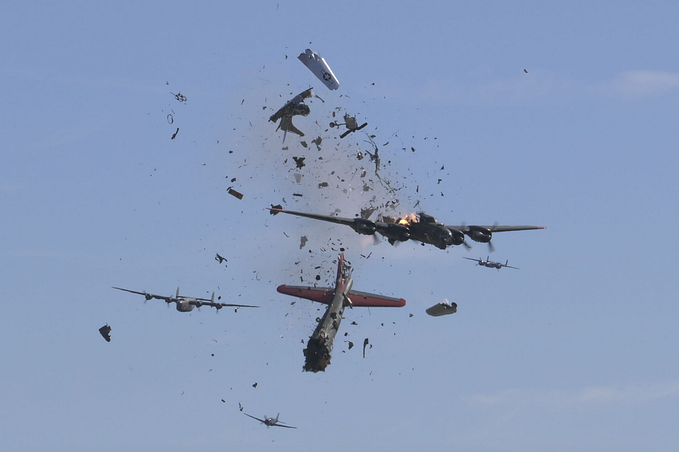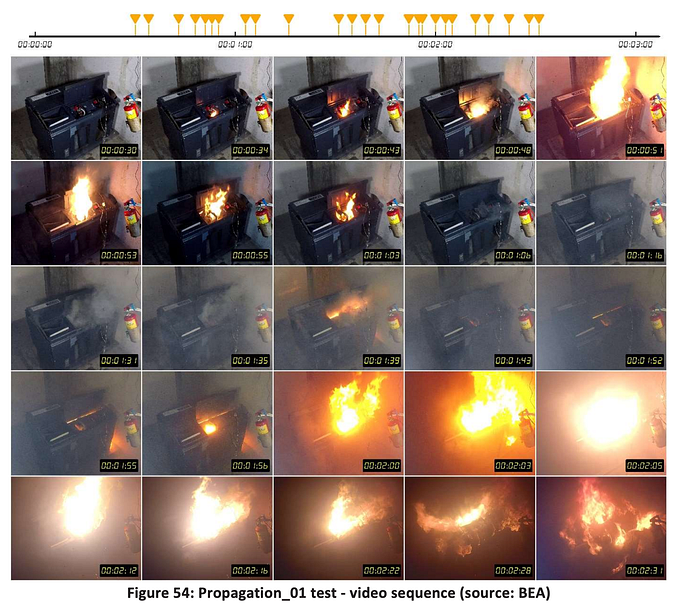Finding Fault: The crash of Korean Air Cargo flight 8509
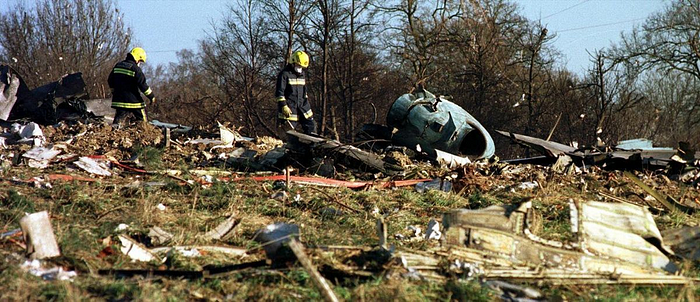
On the 22nd of December 1999, a Korean Air Cargo Boeing 747 crashed into a field in the village of Great Hallingbury in the United Kingdom, its brief flight coming to a fiery end less than a minute after its departure from London Stansted Airport. The crash killed all four crewmembers and placed South Korea’s flag carrier, already reeling from a series of previous accidents, under even greater scrutiny. As authorities weighed whether to impose new restrictions on the struggling airline, British investigators began piecing together the chain of failures, both human and mechanical, which caused the 747 to roll straight into the ground moments after takeoff. They found evidence of a faulty instrument, a misguided repair attempt, and a strangely passive crew who never seemed to catch on to the fact that a malfunction had occurred. Errors of judgment took place both on the ground and in the air, some of them inexplicable in their senselessness. But there was no doubt that better communication between the crewmembers could have prevented the crash, and therein lay the problem afflicting not just this flight, but Korean Air in its totality. Therefore, this is not only a story of a cargo plane crash, but also of an airline’s struggle to overcome its poor safety record — and the ways in which that struggle, and the crash of Korean Air Cargo flight 8509, have been severely warped by the imperfect lens of pop psychology.
◊◊◊
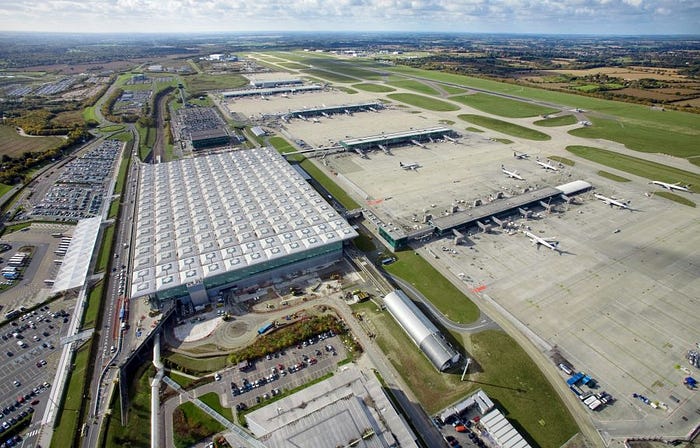
Most passengers flying into London from around the world will land at Heathrow, one of the busiest and most famous airports in the world. But if you choose to fly on a low cost carrier like Ryanair, or if you are an inanimate pallet of cargo, you might be more likely to pass through the British capital’s third busiest airport, London Stansted, which is located in a semirural area some 45 kilometers northeast of the city center.
In 1999, Korean Air Cargo, the freight division of South Korea’s flag carrier Korean Air, operated one cargo flight a week from Seoul to London Stansted using a Boeing 747–200F purpose-built freighter. This route normally involved a number of stops both before and after London, and each trip was a marathon journey involving multiple crews and spanning the better part of two days.
One of these trips was Korean Air Cargo flight 8509, which departed Seoul on December 22nd, 1999, for what promised to be the airline’s second-to-last visit to Stansted before the turn of the millennium. The 747 departed Seoul early that morning with a full load of cargo, before stopping in Tashkent, Uzbekistan to refuel and change crews. The original crew disembarked and went to hotels to rest, while a second crew, placed in Tashkent in advance, boarded the plane to fly it to London, where yet another crew was already in position to carry it onward still further.

Before the second crew took off from Tashkent, they examined the technical log left by the previous crew and noted that there were no outstanding malfunctions — the plane was in good technical condition. It therefore came as a complete surprise when, moments after takeoff, the captain banked the plane to the right to comply with a controller’s clearance, and his attitude indicator did not respond.
The attitude indicator is, almost inarguably, the most important instrument in the cockpit of any aircraft. Familiar even to non-pilots, the attitude indicator, also called the artificial horizon or ADI, depicts an aircraft’s pitch attitude and bank angle using a two-color moving display, with the sky rendered in light blue and the ground in dark brown or black. The term “artificial horizon” is especially apt because the horizon line between the blue and brown sections remains horizontal as the aircraft rotates around it, providing the pilots with a continuous reference that they can use to maintain level flight in clouds or at night. It is not, however, completely immune to malfunction, and so every cockpit comes with three ADIs: one in front of each pilot, and a third, smaller standby ADI in the center. When one ADI fails, it is therefore possible to compare it to the other two, and by majority vote, determine the actual attitude of the aircraft.
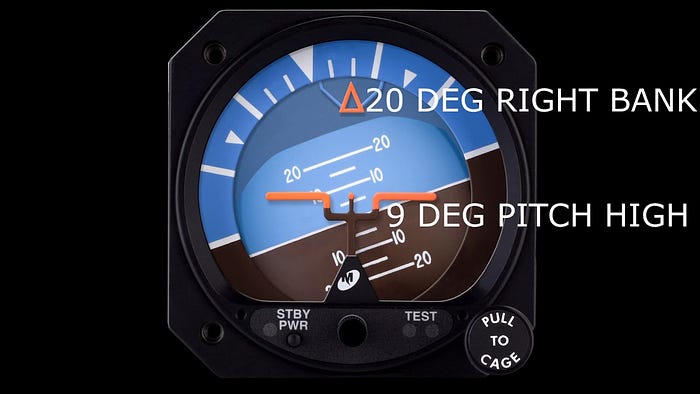
As the Korean Air Cargo 747 was making its right turn while climbing out of Tashkent, the captain’s ADI initially responded by depicting a right bank, but after reaching a bank angle of 10–15 degrees, it abruptly stopped. The pilots continued to turn right, but the bank angle on the ADI refused to budge any further, even after they leveled out. At that point, sensing a mismatch of more than four degrees between the bank angles indicated on the captain’s and first officer’s ADIs, the central warning system triggered an aural comparator warning, and a red flashing instrument malfunction light illuminated on the instrument panel.
Fortunately, the captain could tell simply by looking outside that his ADI was faulty, and he confirmed this by glancing over at the first officer’s ADI and the standby indicator, which both showed the correct bank angle. Following proper protocol, he handed over control to the first officer, and they continued to climb normally. Then, following the abnormal checklist for ADI failure, he switched his attitude and compass stabilization switch from “NORM” to “ALT,” and his ADI immediately unjammed itself, displaying the correct bank angle from then onward.
By moving the switch, what the captain did was change the source of the data used by his ADI to display the aircraft’s attitude. Each of the three ADIs normally gets its data from one of three separate Inertial Navigation Units, or INUs, which each consist of three gyroscopes that measure pitch, bank, and yaw, the airplane’s three axes of motion. On the Boeing 747–200, which had analog ADIs, this data was then converted into signals which drove both the moving blue and brown tape to indicate pitch, and rotated the entire display to indicate roll. Normally the captain’s ADI would receive this data from the №1 INU, but by moving the attitude and compass stabilization switch from NORM to ALT, the captain changed the data source to INU №3 instead. The fact that this solved the problem strongly suggested that the fault was with the №1 INU, not with the ADI itself.
In order to gain more information, after reaching their cruise altitude the captain moved the switch back to “NORM” to see if the problem would recur. In fact, it did: from then on, whenever the flight made a course correction, his ADI continued to show a wings-level attitude even though they were turning. Having confirmed the defect, the captain eventually flipped the switch to “ALT” again and left it there for the rest of the flight, allowing him to use the instrument without any problems.
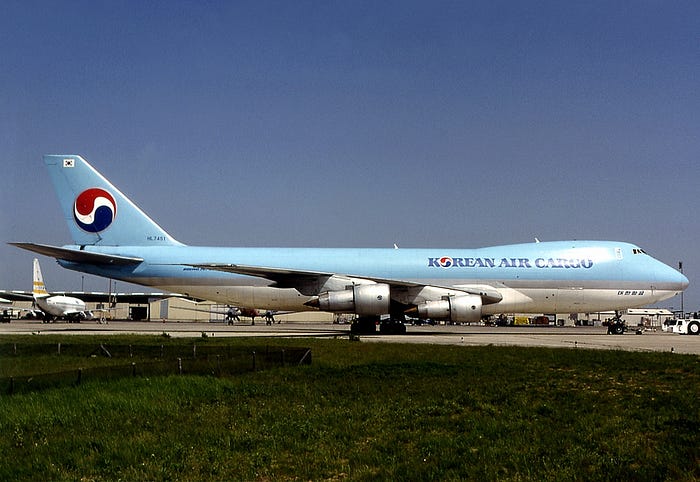
After arriving in Stansted that afternoon, the captain returned the switch to “NORM,” and the flight engineer recorded the malfunction in the technical logbook using the standard terminology, which included a reference code for maintenance personnel and the phrase “captain’s ADI unreliable in roll.”
At that point, the crew met with Korean Air ground engineer Kim Il-suk, who had been dispatched to Stansted to greet the flight and carry out routine line maintenance before its next departure. Kim was normally stationed in Moscow, but he had been assigned a rotation which would see him board the 747 at Stansted before traveling with it to its next stop in Milan, Italy, another airport where (like at Stansted) Korean Air did not have a permanent maintenance outstation. His job would be to coordinate with local mechanics at both airports to rectify any issues which might arise in flight.
As they were disembarking, the outgoing flight engineer told the ground engineer about the problem with the captain’s ADI, and informed him that moving the captain’s attitude and compass stabilization switch to “ALT” had resolved the problem. After that, the pilots, having ended their duty day, clocked out and left. Kim, meanwhile, boarded the airplane and set about preparing the 747 for its next flight with the help of a local engineer.
After conducting walkaround checks of the aircraft and supervising the cargo loading, ground engineer Kim Il-suk called the local engineer up to the cockpit to help him resolve the ADI problem which had been recorded in the technical log. By this point the incoming flight crew had already arrived, and the cargo loading was mostly done.
Normally under such circumstances a ground engineer would examine the technical log, make note of the fault code left by the flight engineer, and then look up that code in the fault isolation manual, or FIM, in order to find troubleshooting instructions. But because there was no permanent Korean Air maintenance outstation at Stansted, no Boeing 747–200 FIM was kept on site, and Kim’s own copy was back in Moscow.
Had he been able to consult the FIM, Kim would have learned that in this case the fault almost certainly lay with the ADI’s data source, not with the instrument itself, and that the correct action was to either replace the №1 INU, or if none was available, to dispatch the plane with the captain’s attitude and compass stabilization switch set to “ALT.” But despite the flight engineer’s description of the fault, which strongly implied an INU problem rather than an ADI problem, Kim told the local engineer that he wanted to solve the problem by removing the ADI and cleaning its connections.
Upon returning to the airplane with the required tools, the local engineer helped Kim unscrew and remove the captain’s ADI. It was then that Kim saw what he apparently thought was the smoking gun: one of the pins connecting the ADI to its electrical socket had been pushed in. If the pin wasn’t making contact properly, he thought, then some part of the signal to the ADI could be intermittently lost. Fixing the pin would require special avionics tools and training, however, so the local engineer called in his colleague who possessed an avionics engineer certification and carried the tools necessary for the job.
This second engineer arrived some minutes later, pulled the pin back out to its proper extension, and reinserted the ADI, as he had been told to do. The only remaining step was to check whether the fix had actually worked, using the aircraft’s built-in testing equipment. Performing this test required starting up the inertial navigation system, including all the INUs, which was accomplished with help from incoming First Officer Yoon Ki-sik, who had recently arrived in the cockpit. Once the system was running, the engineer pressed the “test” button next to the captain’s ADI, and the ADI responded by traveling through its full axes of motion, as it was supposed to. The test also confirmed that the comparator warning was working, so with all checks passed, the engineers declared the problem fixed.

Unfortunately, the test had proven nothing at all. The test passed not because the problem had been solved, but because there was never anything wrong with the ADI in the first place. Although the INUs had to be running for the procedure, the test did not rely on the data which they produced, so the fact that the №1 INU was producing bad roll data went undetected. Nevertheless, ground engineer Kim signed off on the technical log and presumably told the incoming flight crew that the fault had been rectified.
That crew was to consist of 57-year-old Captain Park Duk-kyu, an experienced pilot with over 8,000 hours on the Boeing 747 alone, as well as 33-year-old First Officer Yoon Ki-sik, a new hire with only 1,400 hours and just 73 on the Boeing 747; and 38-year-old Flight Engineer Park Hoon-kyu, whose level of experience was somewhere in between the other two pilots.
(Note: because the captain and the flight engineer had the same family name, all isolated instances of the name “Park” in this article should be assumed to refer to the captain, while Flight Engineer Park Hoon-Kyu will be referred to either with his full name, or simply as “the flight engineer.”)
By 17:27 that evening, the crew had completed their checks and were ready to receive their route clearance. But when First Officer Yoon tried to call the tower, he accidentally used a frequency which was not staffed in the evening, and received no response. Then, after trying again on the proper ground control frequency, the controller informed him that they had not received a flight plan from the airline, and couldn’t issue the clearance. The pilots had to contact their handling agents, who forwarded the flight plan to the tower; only then, at 17:42, did they receive their route clearance. That still left them sitting at the stand, however, because a tug could not be sent to push them back until 18:13.
If at that point the crew thought they were finally underway, their disappointment must have been immeasurable when the tug broke down half way through its attempt to push the 747 out of the stand. The tug had to be disconnected and a marshalling vehicle had to be sent in to guide the crew the rest of the way onto the taxiway. By the time they were actually cleared to taxi, the time was 18:25, and the flight was well behind schedule.
By the time flight 8509 received taxi clearance, Captain Park had become noticeably frustrated by the delays. During the time between engine start and taxi, the cockpit voice recorder captured him lashing out at First Officer Yoon, to whom he said, “Make sure you understand what ground control is saying before you speak!” Apparently dissatisfied with his inexperienced first officer’s abilities, he then took over communications himself, in contravention of normal Korean Air protocol, which held that the first officer should handle the radio while on the ground. Despite this, however, he later admonished Yoon for failing to reply to a transmission: “Answer them!” he said, sounding angry. “They’re asking how long the delay will be!”
Then, as the pilots ran through the taxi checklist, the captain noticed that their DME indicator was showing an unreasonable value. The DME, or distance measuring equipment, is a system at the airport which tells flight crews how far they are from the field, and for obvious reasons the DME distance should read close to zero when the plane is at the airport. In this case, however, the DME was displaying a distance of 399 nautical miles, which was obviously false. Captain Park wondered aloud how, if the DME was not working, he was supposed to complete the takeoff sequence, which required a left turn at 1.5 nautical miles from the DME. If he made the turn too late, he would fly into an area subject to noise restrictions, and he would be written up for a noise violation. So what was he to do if he couldn’t tell when he had reached the 1.5 DME point? Before any real discussion could take place, however, the glitch seemingly passed, as the flight engineer could be heard commenting, “Now it’s working correctly.”
At 18:36, nearly an hour behind schedule, flight 8509 was finally cleared for takeoff. Captain Park called “set takeoff thrust,” and the pilots pushed the thrust levers forward, sending the 747 away down the runway.
“Eighty knots,” First Officer Yoon announced.
“Roger,” said Park.
Some seconds later, Yoon called out, “V1. Rotate.”
Captain Park pulled back on his controls, and the nose lifted off the runway, followed seconds later by the main gear. “Positive climb,” said Yoon.
“Gear up,” said Park.
“Gear up,” Yoon replied, retracting the landing gear.
Straight and on course, the plane continued to climb, until Yoon called out, “Passing nine hundred feet.” In the background, the comparator warning briefly sounded, indicating that, for a moment at least, there was a difference of at least four degrees between the indications of the two primary ADIs.
“We should turn at 1.5 DME,” said Captain Park.
“Yes sir,” said Yoon.
“DME not working,” Park added. Unfortunately, key context here has been lost. Was Park still seeing an erroneous DME indication, or did he simply expect to see one, despite the flight engineer’s earlier comment that the DME was working correctly? We’ll never know, but one thing was clear: Park was concerned about the DME, and worried that he wouldn’t make the turn in time.
“One five eight,” Yoon said, reminding him of the heading to which he was supposed to turn. The comparator warning again sounded for a split second.
“Eh?” Park questioned.
“Heading standby sir,” said Yoon. “Heading one five eight.”
Now Park began to turn to the left, from his present heading of 230 degrees, or southwest, toward 158 degrees, or southeast. However, while his attitude indicator showed the correct pitch angle, it didn’t react on the roll axis at all. The other two ADIs, meanwhile, showed the plane turning left in response to the captain’s inputs, so the comparator warning sounded again, and this time it didn’t stop.
At that moment the controller called the crew and said, “Korean Air eight five zero nine, contact London one one eight decimal eight two, goodnight.”
Simultaneous with the transmission, Flight Engineer Park Hoon-kyu noticed that the captain’s ADI seemed to be faulty. “Bank is not working,” he pointed out. Neither pilot replied. Growing increasingly concerned, he repeated his warning: “Bank, bank…”
Nobody reacted to his comments, but somebody did silence the comparator warning, as though it were a mere nuisance.
Keying his mic, First Officer Yoon finally replied to air traffic control. “One one eight eight two, Korean Air eight five zero nine,” he said, acknowledging the handover. But London control would never hear from the 747, nor would anyone else.

In fact, their situation was rapidly developing into a complete loss of control. Captain Park was still holding his control column to the left, long after he should have let go, and still his ADI hadn’t budged. The flight engineer seemed to be the only one aware of the problem, and he attempted to draw the captain’s attention to his alternate instruments by saying “Standby indicator (also?) not working?” But nobody answered him.
The plane was banking past 45 degrees, then 50, then 60. Finally, approaching 80 degrees of bank, the 747’s wings proved unable to maintain lift, and it began to descend rapidly from a peak altitude of 2,500 feet above the ground. The nose fell through, and even Captain Park’s ADI began to show an alarming nose down attitude, but neither pilot reacted. Remarkably, it seemed that Park was still focused on the timing of the turn, as he said to First Officer Yoon, “Hey, request radar vector.”
But Yoon would never get a chance to ask ATC for help. By now the plane was banked 90 degrees to the left and falling fast; the cockpit voice recorder began to capture the sound of wind streaking past the cockpit as it plunged toward the ground. The final words came from Flight Engineer Park Hoon-kyu, who said, his voice tinged with bitter resignation, “Oy, bank…”
And then there was silence.

Fifty-six seconds after it took off, Korean Air Cargo flight 8509 slammed into an earthen embankment abutting an artificial pond, instantly shattering the aircraft and throwing up a massive explosion which bathed the surrounding countryside in a caustic, orange glow. Debris tumbled end over end through the night, careening for several hundred meters across the pond, a field, and a forest, before the fire drew back and darkness rolled in once more.

◊◊◊
The crash and explosion were witnessed not only by controllers at Stansted tower, who immediately rang the emergency alarm, but also by the astonished residents of the tiny village of Great Hallingbury, whose homes had come perilously close to being struck by the plane as it roared overhead. Some of these witnesses rushed to the scene to search for survivors, only to find a smoking crater in the ground, surrounded by burning debris, lit only by the light of the flames. Their efforts, and those of police and fire crews who arrived soon after, proved in vain: all four occupants, the three pilots and the ground engineer, had died instantly on impact.
For the local residents, however, the ordeal did not end when the flames were extinguished and the crash site was cordoned off. It was not until after investigators from the Air Accident Investigation Branch (AAIB) had arrived the following day that traces of radiation were detected, prompting an evacuation of all personnel from the crash site, to the great alarm of those living nearby. Only later did Korean Air confirm that the plane had been carrying radioactive iodine for use in medical equipment, which was subsequently spread throughout the crash site. Fortunately for those who were working there, however, the iodine was found to have been spread so thinly by the crash that it no longer posed any danger to human health.
Meanwhile, AAIB investigators set about examining the contents of the plane’s flight recorders at their headquarters in Farnborough. From the beginning, it was obvious that something was wrong with the flight data recorder’s roll parameter, which showed the plane remaining within 2.5 degrees of wings level throughout the flight, even though the heading parameter showed that the plane had turned significantly off course before it crashed. Examinations of the wreckage confirmed that the plane had struck the ground while pitched 40 degrees nose down and banked 90 degrees to the left, but the Captain’s ADI, frozen at the moment of impact, was showing a 40-degree nose down pitch with wings level.
There was one obvious commonality between these discrepancies: both the FDR and the captain’s ADI got their bank information from the same source, the №1 Inertial Navigation Unit.

Although the unit was destroyed in the crash, preventing a precise determination of why it failed, investigators were able to make a number of deductions which narrowed down the nature of the failure, if not the cause. Notably, roll data is distributed from the INU via five separate channels, of which the captain’s ADI received data from channel one, and the FDR from channel three. The fact that two channels were sending faulty data suggested that, most likely, so were the other three, and that the failure had occurred upstream of the data distribution, during the generation of the data itself. Tests later showed that a short circuit between two of the three wires carrying roll signals from the gyroscope could cause the output value to remain within two degrees of wings level no matter the actual bank angle. However, while this scenario was a good match for the recorded data, the AAIB could not conclusively prove that this was what happened.
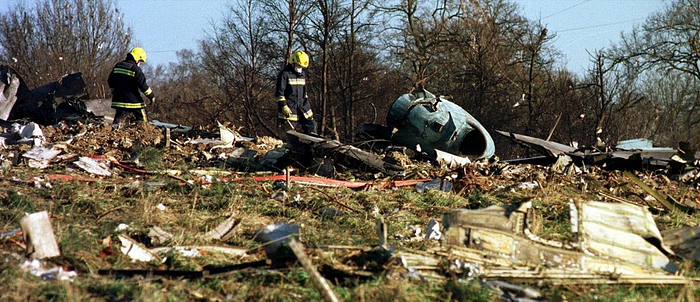
Interviews with the previous crew who flew from Tashkent to Stansted revealed that not only had they experienced this failure, they had also solved it easily and recorded the occurrence in the technical log, in full adherence to standard procedures. The question then was why it was not fixed before the next flight.
Korean Air ground engineer Kim Il-suk had unfortunately been on board the ill-fated flight, so the person most qualified to answer that question was no longer alive to be interviewed. And to make matters worse, the crew had apparently not complied with the legal requirement to leave behind a copy of the technical log, and the logbook was destroyed in the crash, taking with it the best hard evidence of how the problem was conveyed to the subsequent crew. However, interviews with the two local maintenance engineers substantiated the claim that the defect was recorded in the log, and that the incoming crew had seen it. These interviews also revealed that Kim applied an improper repair technique which did not address the underlying failure of the №1 INU.
Having apparently been told by the outgoing flight engineer that moving the captain’s attitude stabilization switch to “ALT” fixed the problem, it was odd that Kim, who had 20 years’ experience as an aircraft mechanic, would have reacted the way he did. His existing systems knowledge should have told him that an ADI problem rectified in this manner was really an INU problem.
The absence of a Fault Isolation Manual aboard the aircraft or at the airport definitely played a role in his incorrect diagnosis, but investigators noted that there may have been other factors in play as well. Most importantly, maintenance engineers in Korea were given a single certification which authorized them to perform all line maintenance activities, as opposed to engineers in the US and the UK, who had to obtain separate, specialized certifications for work involving avionics. Although UK maintenance engineers responsible for remote station maintenance, such as that performed on the Korean 747 at Stansted, could receive an “avionics extension” allowing them to make certain types of avionics repairs, the failure on flight 8509 was outside the scope of this extension and its rectification would have required a specially qualified avionics engineer. Despite this, Korean authorities informed the AAIB that the training for their general engineer certification was more similar to that of a regular “airframe and powerplant” certification with an avionics extension than it was to a full avionics engineer certification. It was therefore entirely possible that Kim was unfamiliar with the inner workings of the plane’s avionics, despite being qualified in Korea to work on these systems.

When Kim subsequently called on the first local engineer, who for clarity’s sake will be called Engineer A, he may not have been fully aware that he was an airframe and powerplant engineer who was not certified to work on avionics. Therefore, when he explained the nature of the problem to Engineer A, who then helped him remove the ADI, he may have gotten the impression that the engineer’s compliance represented approval of his troubleshooting methodology, which in fact Engineer A was not qualified to assess.
After performing this task, Kim’s line of thinking was seemingly confirmed when he discovered a pushed-back connector pin on the back side of the ADI. In retrospect, however, this was a red herring. Investigators believed that the pin had most likely been pushed in when the ADI was first installed earlier that year, and that the instrument had been operating normally despite this defect until the INU failed on the flight out of Tashkent.
At this point, Kim and Engineer A did call for the assistance of an avionics engineer, who we shall call Engineer B. But, having convinced themselves that they knew the cause of the problem, they didn’t ask for Engineer B’s input on their troubleshooting strategy, nor did he offer any, since he didn’t know and wasn’t told the nature of the problem they were trying to solve. In post-crash interviews, Engineer B told investigators that he would have easily determined the INU to be the source of the problem had he seen the entry in the technical log, but in the event he didn’t see it and he didn’t ask. Instead, he did something which is known to increase the risk of maintenance errors: he finished a task he didn’t start, and in doing so inadvertently added the weight of his expertise to the erroneous decision to attempt the task in the first place.
Investigators noted that, had he been unsure what troubleshooting strategy to employ, Kim could have simply called Korean Air’s maintenance headquarters in Seoul and asked. He could also have called for help from FLS Aerospace, the maintenance company at Stansted which provided Engineers A and B and with which Korean Air had a technical assistance contract. Unfortunately, he did neither of these things. The AAIB couldn’t say for sure why he didn’t ask for help, but they noted that at his usual station in Moscow, Korean Air’s local contractors were not very familiar with Western-built aircraft and may have been of little help, causing him to become accustomed to figuring things out on his own. If this was the case, the possibility that he could ask qualified FLS Aerospace personnel for a second opinion might never have occurred to him.
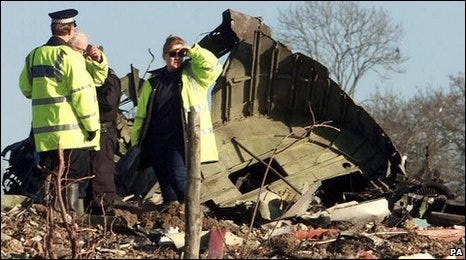
After the “repair” to the ADI was complete and the instrument passed its checks, it would have appeared to the pilots that the problem had been resolved, and it does not seem that they were worried about the possibility of a recurrence. In fact, at no point after the cockpit voice recording began did anyone mention the ADI problem. Had he been worried about the functionality of his ADI, Captain Park would have told the other crewmembers to cross-check it during the flight, but there is no evidence that he did so.
Instead, the crew seemed to be occupied with various other distracting problems, from the missing flight plan to the broken-down tug to the issues with the DME. This last issue was especially significant for Captain Park, who brought it up repeatedly, even as the plane was in the process of turning over. In the interest of shedding light on the issue, the AAIB checked the functionality of the distance measuring equipment at Stansted Airport and found no issues; however, they noted that intervening obstructions blocked the signal at several points on the airfield, including the runway. If Park was unaware of this fact, he might have believed that the DME would remain unreliable after takeoff, causing him to focus on the timing of the 1.5 DME turn at the expense of other, more important matters. Fixated on avoiding a noise violation, he continued unconsciously applying a left roll input, expecting some feedback from his ADI to tell him to stop, and unaware that he was receiving none because it was not working. No other obvious peripheral cues would have been available, given the dark, cloudy night and the nature of the one-G turn, which would have kept pressing him into the floor regardless of their bank angle. His brain therefore never received the signal telling him to stop rolling. While some observers assume that Park kept trying to roll left in the belief that the airplane was not responding to his commands, this is unlikely. In all probability he didn’t realize anything at all was wrong until the plane struck the ground.
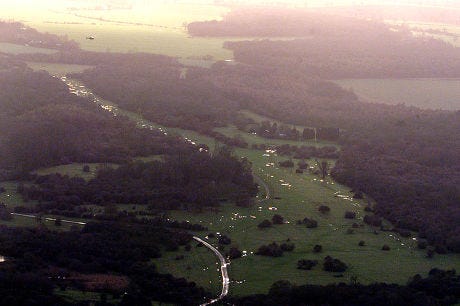
Needless to say, there were plenty of cues that a malfunction had occurred. Besides the fact that he was turning left but his ADI wasn’t rolling, the ADI also showed a steep nose down attitude as the plane began to descend, which somehow failed to elicit any reaction. Furthermore, during the brief climb, the comparator warning sounded three times, producing a repetitive chime and flashing warning lights in an attempt to inform the crew that their instruments disagreed. The flashing lights would have remained illuminated for a full 22 seconds from the first comparator activation until the warning was finally cancelled by the crew, or if not, one of the crew must have cancelled the warning three separate times during the climb. It is not known who cancelled the warning, or how many times they did so, but whoever it was clearly failed to appreciate its significance and take positive action.
It is also unknown whether First Officer Yoon ever realized what was happening, since he made no comment one way or the other. If he did know that something was wrong, he might have been reluctant to speak up given his inexperience on the type — only 73 hours — and Captain Park’s gratuitous and unwarranted criticism of his abilities prior to takeoff. Nevertheless, it is hard to believe that he fully understood the danger, considering that if he did, then he must then have passively watched the captain steer them toward certain doom. On the other hand, he was distracted with a radio call at the moment the situation became critical, and it was entirely possible that he didn’t return to his instrument scan until it was too late. Indeed, it must be kept in mind that only about 13 seconds passed between the point where the plane began to lose altitude and the moment it struck the ground. This is simultaneously a lot of time, and very little. Simulations later showed that those 13 seconds were plenty long enough to level the wings and regain control, but for a very green first officer to realize something is wrong, determine that the captain is not taking action, and choose to intervene, it’s not much time at all.
Of course, those 13 seconds must have been most painful for the flight engineer, who was aware of what was happening from the very beginning. One can only imagine his growing panic as his warnings to the pilots were repeatedly obscured by ATC transmissions or otherwise tuned out by his distracted and confused colleagues. Unfortunately, beyond trying in vain to get the pilots’ attention, there was nothing he could do, and he alone spent the final moments of the flight knowing that he was about to die.
◊◊◊
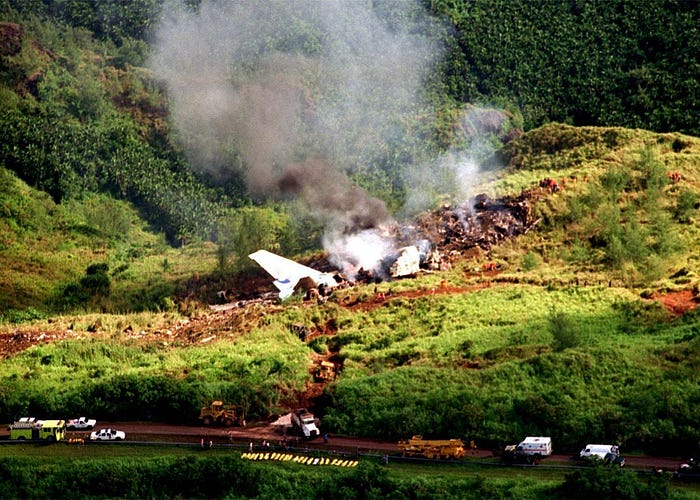
The crash of Korean Air Cargo flight 8509 might not have garnered much international attention were it not for the fact that Korean Air had already suffered a string of sometimes fatal accidents throughout the 1990s. During that time, in addition to writing off four airframes in serious but non-fatal landing accidents, the airline also experienced a major disaster in 1997 when flight 801, a Boeing 747, crashed into a hill while landing in Guam, killing 228 people. The crash was attributed to the captain’s premature descent and the other crewmembers’ failure to question it. Then, in April 1999, a Korean Air Cargo MD-11 crashed into an industrial area in Shanghai, China, killing all three crew along with five on the ground, after the pilots lost control during a dispute over whether their cleared height had been given in feet or meters. Now, in December, another 747 had gone down with the loss of all four crew.
This latest accident added yet another black mark to the airline’s checkered history. At the time of the crash at Stansted, the government of South Korea had already placed Korean Air on a form of corporate probation, forbidding it from opening new international routes until it improved its safety record. Authorities in the United Kingdom faced pressure to review Korean Air’s permission to operate in the country, and Korean officials vowed that if the crash of flight 8509 were found to be the airline’s fault, further punitive measures would be taken.
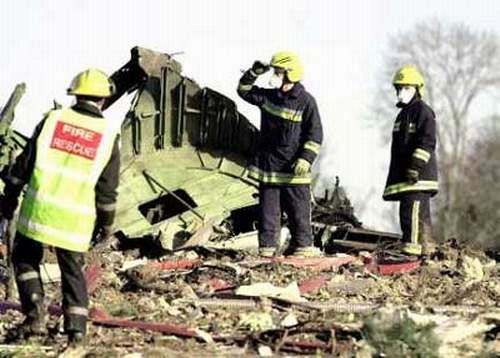
In the end, the crash was partly blamed on the airline. It had failed to equip its pilots with the skills they needed to maintain situational awareness and react to unusual situations. It also relied too heavily on as-needed “technical assistance” contracts and on-board engineers to fulfill its line maintenance needs, rather than establishing more permanent outstations or entering full-time contracts with capable maintenance companies. At the time of the accident, Korean Air was already involved in a year-long review process with a major US carrier intended to identify areas for improvement, and the aforementioned shortcomings were among those which the company moved to rectify following the completion of the audit. It also modernized its crew resource management training program, established permanent maintenance outstations at almost all of its international destinations, and introduced more frequent unusual attitude and instrument failure training scenarios. The end result of these reforms — there were hundreds of them in total — was a transformational shift in Korean Air’s company culture, the results of which have been profound, as flight 8509 turned out to be not only the airline’s last fatal crash, but the last time it lost an aircraft at all, with fatalities or otherwise.*
*Update: On 23/10/2022, after the publication of this article, a Korean Air Airbus A330 was damaged beyond repair in a non-fatal runway overrun accident in Cebu, Philippines. The cause of the accident is under investigation.
◊◊◊
All of this having been said, it is impossible to write about Korean Air Cargo flight 8509 without addressing the elephant in the room. Among the general public, much of the discourse about the crash was defined several years later by journalist Malcolm Gladwell in his bestselling 2008 nonfiction book Outliers: The Story of Success. The book attempted to address the reasons some people succeed and others fail, and was read by millions, mostly in the United States. Perhaps its most famous chapter was entitled “The Ethnic Theory of Plane Crashes,” and was responsible for popularizing the idea that Korean Air’s poor safety record was due to a conflict between the realities of a multi-crew cockpit and the expectations of Korean culture. This idea has become so widespread in America that it is often accepted uncritically as fact.
For those not familiar with it, Gladwell’s theory contained two main arguments. The first was that Korean culture placed greater value on hierarchies than other cultures; in other words, that it was more vertically rather than horizontally oriented, which made it more difficult for subordinate crewmembers to speak up if the captain was making a mistake. The second argument was that the Korean language makes much greater use of mitigations and context-dependent statements than English does, which leaves more room for interpretation and muddles communication during emergency situations. To support his argument, Gladwell mainly drew on the crash of Korean Air flight 801, but also mentioned Korean Air Cargo flight 8509, presenting both as examples of accidents caused by subordinate crewmembers failing to call out their captains and using hesitant or unclear language which did not convey sufficient urgency. Finally, he concluded by acknowledging Korean Air’s safety turnaround, which he attributed to the airline’s decision to mandate that pilots communicate in English.
Gladwell was not the first to come up with this theory, which appears to have been floating around in the industry for some time, given the existence of an AAIB safety recommendation encouraging Korean Air to reform its crew resource management training program to “better accommodate Korean culture.” Gladwell did, however, play an instrumental role in bringing the notion into the mainstream. The theory became popular in part for its simplicity, requiring no particular aviation knowledge on the part of the reader. It’s also based in a self-evident truth: that safe flying relies on communication, and that because culture informs the way we communicate, it must also have some impact on the way we fly airplanes. But that raises another question: what exactly is “culture,” and how can we detect its influence on an aircraft accident?
Culture is, on the most basic level, a set of norms and practices common to a certain group of people. A country may have a culture, as might a city, a neighborhood, a company, or a group of friends. Every person is influenced by multiple overlapping cultures belonging to the various groups of which they are a part. If we consider the Korean Air pilots involved in the crashes of flights 8509 and 801, then we can speculate that they were influenced by Korean culture, Korean Air company culture, professional pilot culture, and in the case of some (but not all) of the pilots, military culture, as well as any other regional identities and spiritual or civic groups of which they may have been a part. There are several methods which we might then use to determine what actions were influenced by one culture as opposed to another. For instance, the proposal that the human shortcomings which led to Korean Air’s poor safety record were the specific result of Korean culture is best supported either by excluding the proposition that the company culture was at fault, or by proving that other Korean airlines had equally poor safety records for the same reasons.

The biggest issue with Gladwell’s argument is that he did neither of these things, and made several basic mistakes while doing so. Gladwell padded his statistics by including several major accidents caused by terrorism, without which it becomes clear that Korean Air’s safety record, while poor, was not so much poorer than other airlines as to require an extraordinary explanation. For example, Taiwan’s flag carrier, China Airlines, was much worse during the same period, and Korean Air was only somewhat less safe than the most dangerous US airline of the 1990s, USAir. Nevertheless, if we accept the dubious notion that Korean Air’s safety record required a broader cultural explanation while China Airlines and USAir didn’t, then Gladwell still committed numerous factual and journalistic faux pas. For one, he didn’t interview a single Korean when writing “The Ethnic Theory of Planes Crashes,” despite the fact that he didn’t speak Korean and had never spent significant time in Korea. While he was not completely wrong in some of his generalizations, he applied them to the case studies without understanding the nuances of either Korean culture or the plane crashes in question. For instance, despite his conclusion that mitigating features of the Korean language contributed to the breakdown of communication in the cockpit of flight 801 in Guam, he neglects to mention that virtually all of the cockpit conversations in the final minutes of that flight were conducted in English.
Not only was Gladwell guilty of cherry-picking quotes from the cockpit voice recorder transcripts, the connections he drew between these quotes and Korean culture relied on speculative assumptions about what the pilots were “really” thinking, in effect allowing him to make up whatever interpretation he wanted. In the case of flight 8509, for example, we simply do not know whether the first officer was aware of what was happening, but because of Gladwell’s ideas, many people believe that he was, and that he failed to speak up because of the cultural expectation that he would not call out his more senior captain, despite a lack of evidence that this occurred.
Secondly, Gladwell failed to adequately explain why Korean Air’s rival Asiana Airlines, while certainly not perfect, had a much better safety record than Korean Air, when in theory it should have been subject to the same cultural forces of rigid hierarchy and mitigative language. He thus left open the perhaps preferable explanation that it was Korean Air’s particular failure to train pilots to communicate properly, and not some inherent uncommunicativeness of the Korean language, which led to the accidents.
Finally, in his closing statement, Gladwell revealed his lack of understanding of aviation safety when he claimed that it was Korean Air’s adoption of English in the cockpit which solved its safety problems. Anyone familiar with aviation safety is probably already rolling their eyes. In fact, English was already the default language in Korean Air cockpits, given that the airline flew Western-built airplanes whose procedures were written in English. Its use was expanded after the accidents, but its impact on safety pales in comparison to the myriad other reforms initiated after the 1999 audit, especially the modernization of its CRM training program, which hadn’t been seriously updated since 1986. But crediting any single reform is impossible — safety is achieved on a systemic level, by many small changes which reinforce one another, and not by finding some magical silver bullet which solves every problem.
The lesson here is that attributing a pilot’s actions to the character of a national culture is difficult, especially when considering other potential factors which are more directly observable. And even more importantly, this type of generalization can lead to demonstrably negative consequences if the author is insufficiently circumspect. In fact, at some point the popular interpretation of the ethnic theory of plane crashes began to transform from Gladwell’s probable intent, which was that Korean culture explained the particular way in which Korean pilots crash, to the much less nuanced notion that when Korean pilots crash, it’s because they’re Korean.
This insidious mischaracterization reared its ugly head when Asiana Airlines flight 214 crash-landed in San Francisco in 2013, prompting a wave of media reports calling back to Malcolm Gladwell. Even reputable newspapers ran analysis articles raising the possibility that the features of Korean culture identified by Gladwell could have played a role in the accident, despite the fact that almost nothing was known at that time about the cause of the crash. The Asiana Airlines crash took place 14 years after the last accident examined by Gladwell, did not involve the airline Gladwell wrote about, and occurred under visibly different circumstances. Nor was there any particular reason to single out Korea, given that the country’s airlines now have a well above average safety record, on which Asiana 214 is the only recent blemish. In fact, the only reason to apply the ethnic theory of plane crashes was the fact that the pilots were from Korea. And so, without the least bit of critical introspection, the ethnic theory of plane crashes had been unwittingly transformed from discourse into racism.
◊◊◊
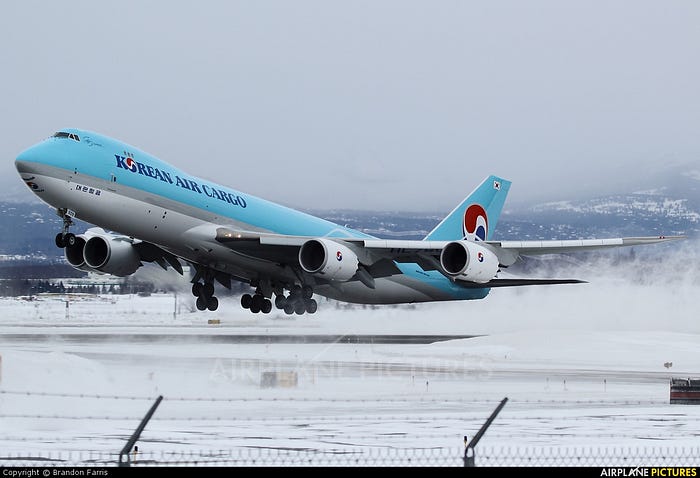
At the end of the day, there is obviously value in examining national-level cultural influences on pilot behavior, for reasons already stated. There are, for example, interesting arguments to be made about the intersection between aviation safety and bureaucratic indifference in Russia, or notions of individual responsibility in America. There could even be a connection between Korean culture and Korean plane crashes after all, which has yet to be properly articulated. But the story of Korean Air and its portrayal by Malcolm Gladwell is a case study in how not to write a cultural analysis of a plane crash. Any such analysis should be supported by evidence that a trend runs deeper than the individuals or companies involved, which Gladwell’s was not. His argument was unconvincing, his research was skin-deep, and his data were incomplete. And perhaps worst of all, he unleashed a monster by packaging his analysis into a sound bite that could easily be used, and was used, to justify discrimination.
So what, then, was the real problem with Korean Air? In this author’s opinion, the increased rate of accidents was most likely the result of a confluence of factors. A 1999 survey revealed that Korean Air pilots were indeed more likely than average to believe that the captain was god, which may have had something to do with the revolving door which then existed between the airline and the military, where strict hierarchies are a fact of life. The airline also underwent rapid growth throughout the 1990s, a known risk factor which would have reduced the average quality of both its pilot training and its pilots. The combination of these two factors would have led to more pilot errors in an environment where subordinate pilots were not encouraged to detect and manage those errors. The consequences of this perfect storm go without saying. They made themselves known in a ball of fire over Great Hallingbury, and in the haunting final words of a crew who never managed to grasp what had gone awry.
_______________________________________________________________
Join the discussion of this article on Reddit!
Visit r/admiralcloudberg to read and discuss over 220 similar articles.
You can also support me on Patreon.

